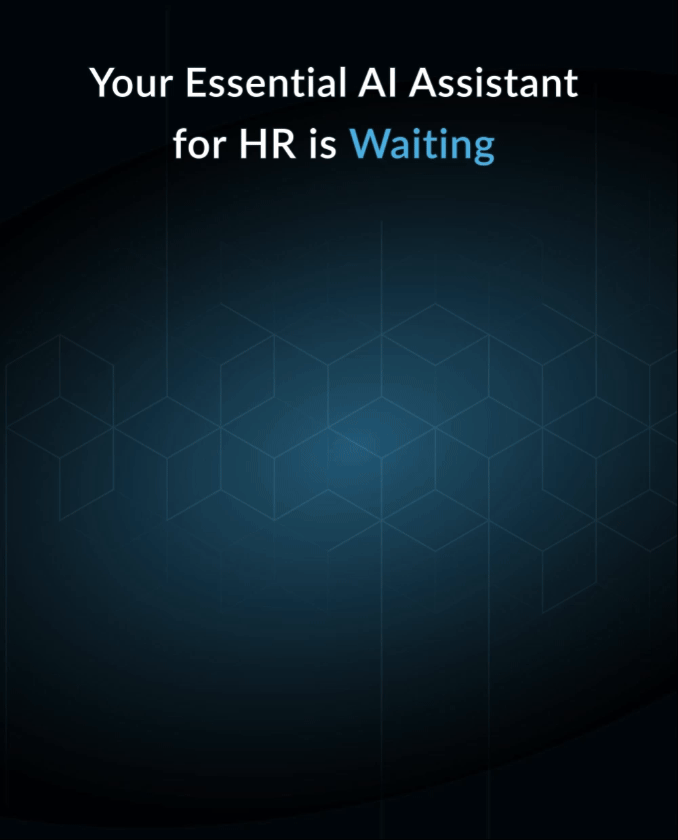SuccessFactors Delivers on HXM and The Promise of AI
SAP SuccessFactors, the largest HCM vendor in the market, has now delivered on their long-range promise of rethinking the way HR systems work. It has been a long and winding journey, but this week the company arrived in a very special place.
A Short History
The history of SAP’s HR software is complex. The company acquired SuccessFactors, a pioneering talent management software company, in 2012 for around $3.4 Billion. At that time we were in the early days of adopting cloud-based systems, and vendors like Workday were well ahead. SuccessFactors was primarily a system used for performance management, recruiting, and later HR management, and the company had just acquired Plateau (in 2011) to deepen functionality in learning, career management, and compliance.
Given this complex acquisition, it took SAP some time to figure out how to move these applications into the SAP architecture, evolve the user experience, and ultimately create an end-to-end human capital system that not only gives companies the functionality they need, but also integrates strategically with all the SAP financial, supply chain, expense management, and other tools.
Along this circuitous path (multiple SuccessFactors management teams later), the company came to realize that doing a better job of integrating HR software was not going to be enough. So they invented the idea of “Human Experience Management” (HXM) in 2019, and reinvented the concept of the suite from that of a business-centric operational system (the founders called SuccessFactors “business execution software”) to that of a system that can help companies and employees grow, evolve, adapt, and thrive.
This led to many changes. SuccessFactors rebuilt its core people model and started to incorporate the idea of the whole self model: the belief that employees are most engaged and productive when they bring their whole selves to work. The “whole self” includes skills as well as attributes, aspirations, strengths, work styles, and more.
This led to a focus on wellbeing, flexible work, team-based management, and finding ways to help employees grow and enhance their careers. The company introduced a team-centric management tool, and tools to help with OKRs, goal-setting, and team management.
A focus on teams and development then led the team to think about their skills strategy. This work led to the development of a capability framework (originally called Center of Capabilities), designed to go beyond skills to help companies define critical business capabilities and embed these into the lifecycle of development (we are big fans of this approach). That work, which is now available, led to the development of the SuccessFactors Opportunity Marketplace and a new offering launched this week called the Talent Intelligence Hub. (Last year I went so far as to call this “SuccessFactor’s biggest new release in a decade,” and the prediction is coming true.)
And throughout this entire process, the company has centralized and standardized its user experience, consolidated its data model, and built a global engineering team that operates in an integrated and productive way.
Where We Are Today
Today, 11 years after the acquisition of SuccessFactors, the SuccessFactors platform is building momentum. I just spent several days with the leadership team and the platform is now deeply infused with AI-features, generative AI offerings, and an impressive new copilot called Joule.
Here is what was just launched.
First, a new user experience, which includes SAP Joule, the company’s new AI copilot that helps users find information, run reports, and interact directly with SAP systems. You can see that SuccessFactors is more than an HR system, it’s also the front-end to other business systems.
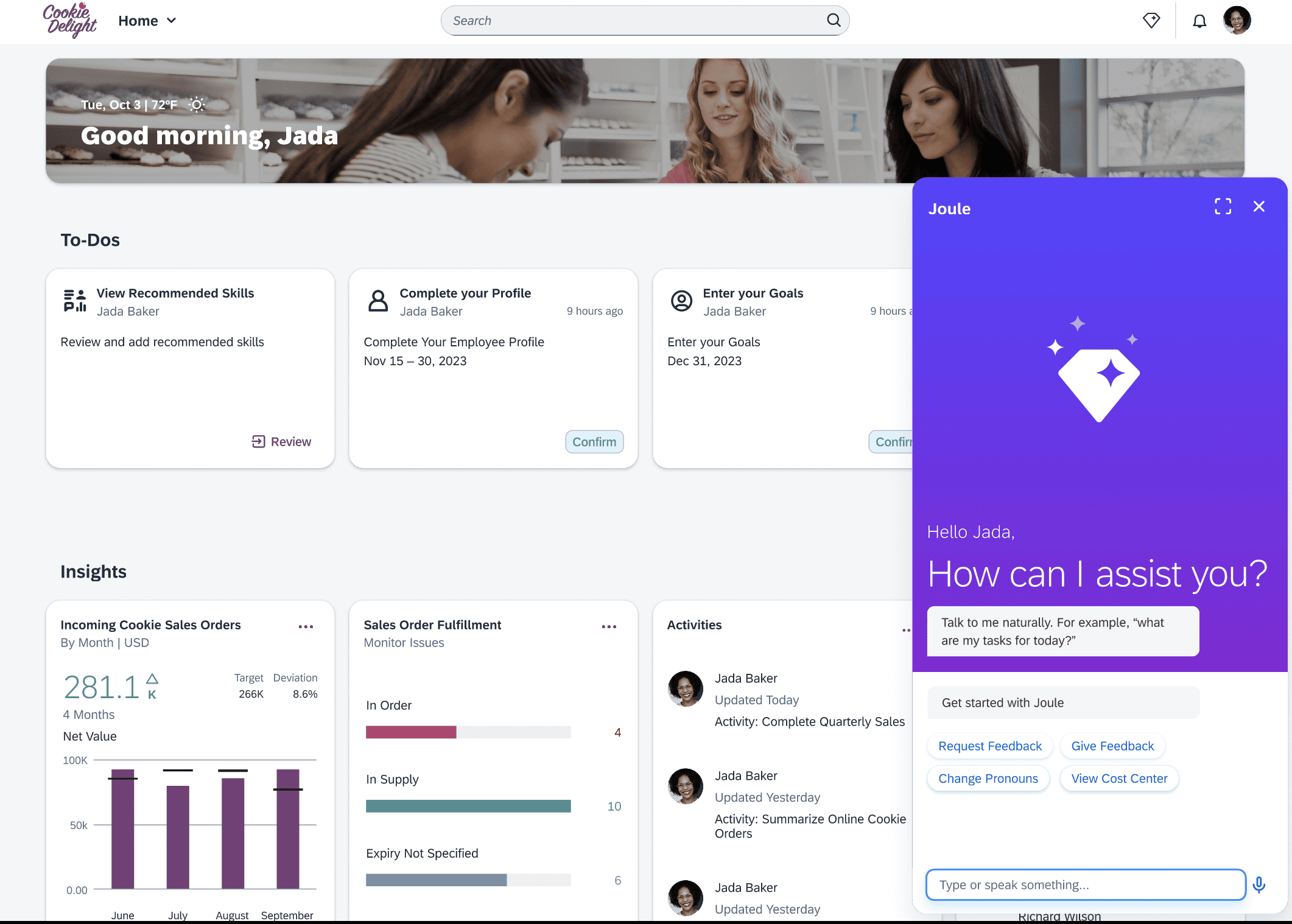 |
Second, HXM now has an integrated toolset for development, growth, and internal mobility (SuccessFactors Opportunity Marketplace). The platform infers your skills, recommends adjacent skills, points you to learning, and offers internal projects and new roles for development. It also includes tools to automatically generate job descriptions from company capability and job level data, intelligently assess candidates, and connect the functions of recruiting and training through development.
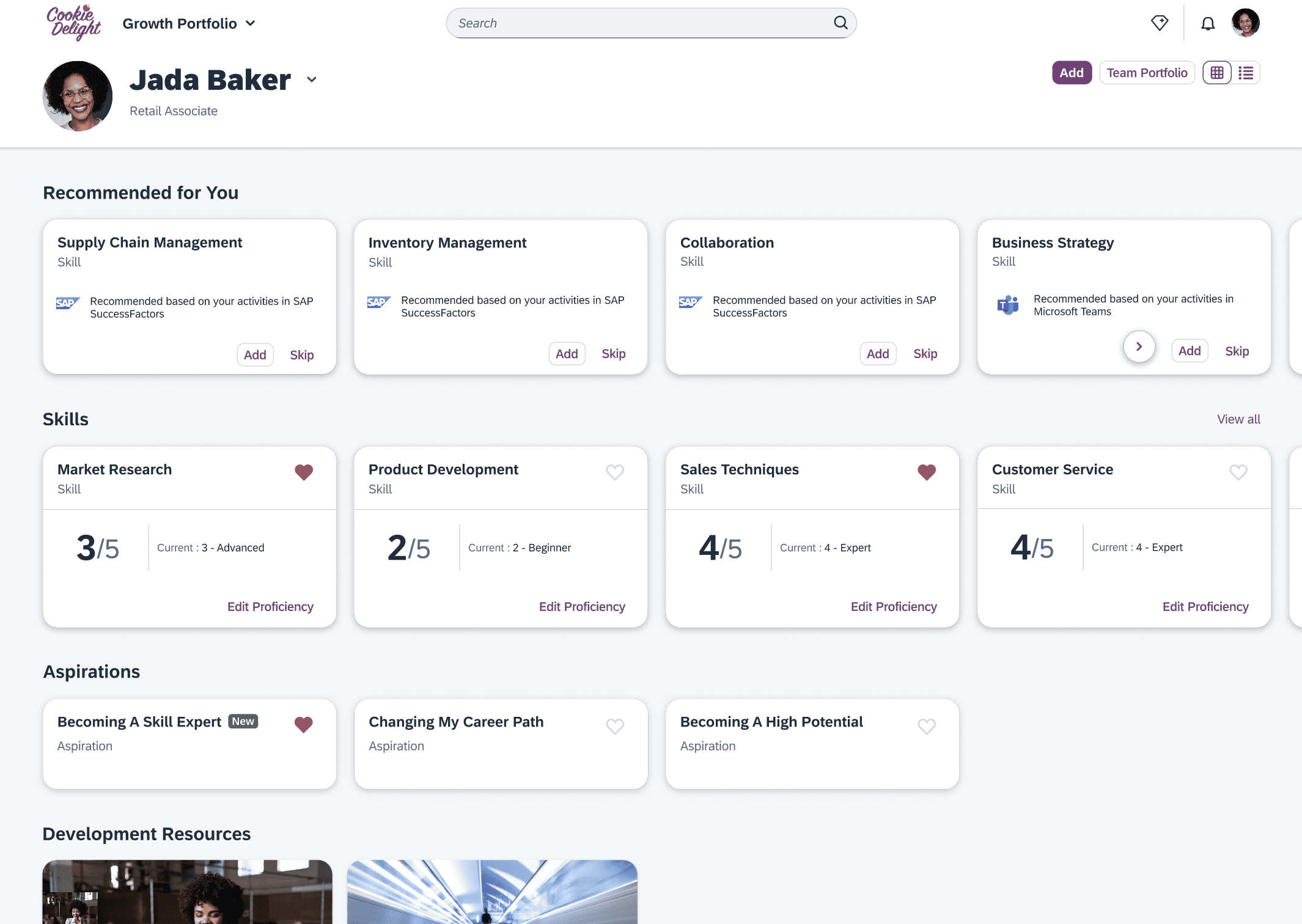 |
Third, the HXM platform has totally modernized its learning experience. Content that was curated in the talent intelligence hub is automatically recommended, so employees can get skills-based learning, what I call “talent-based learning” (career growth) or learning that rounds out their overall personal growth.
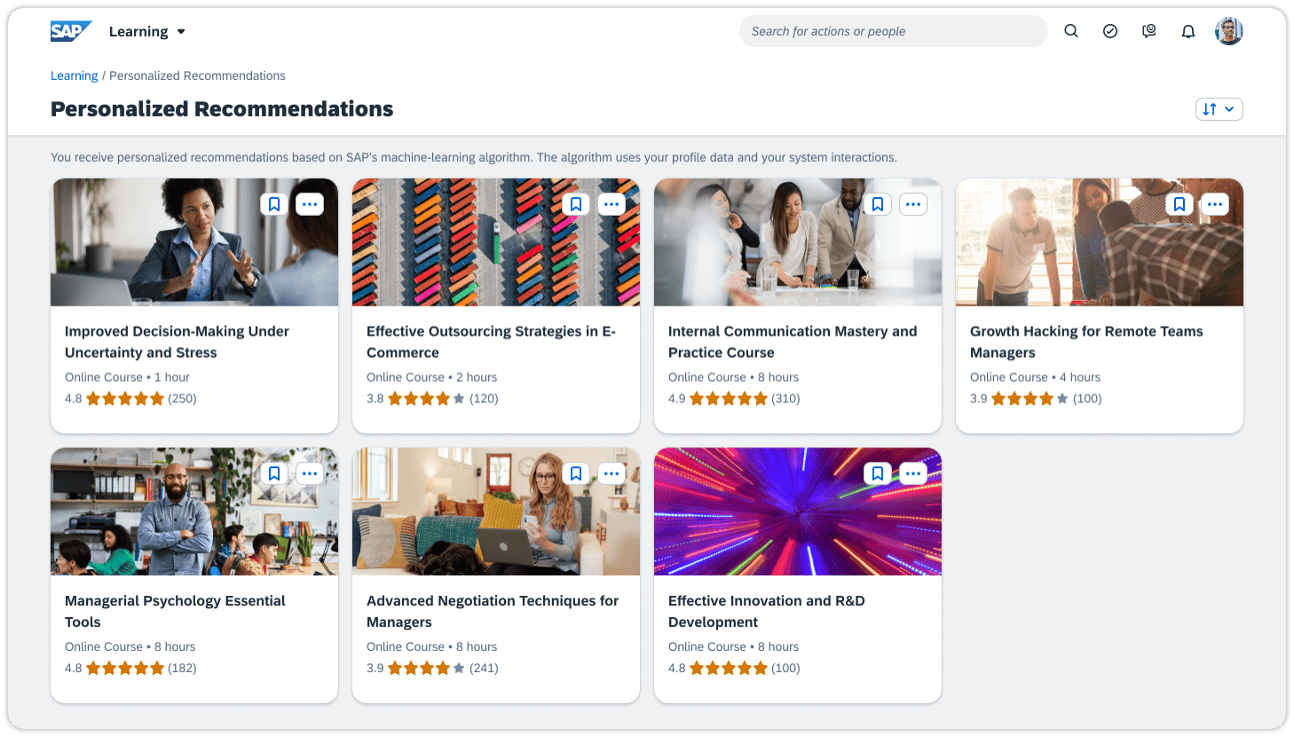 |
And there’s much more. HR leaders or business partners can now easily monitor and manage these processes, through both reports and within Joule.
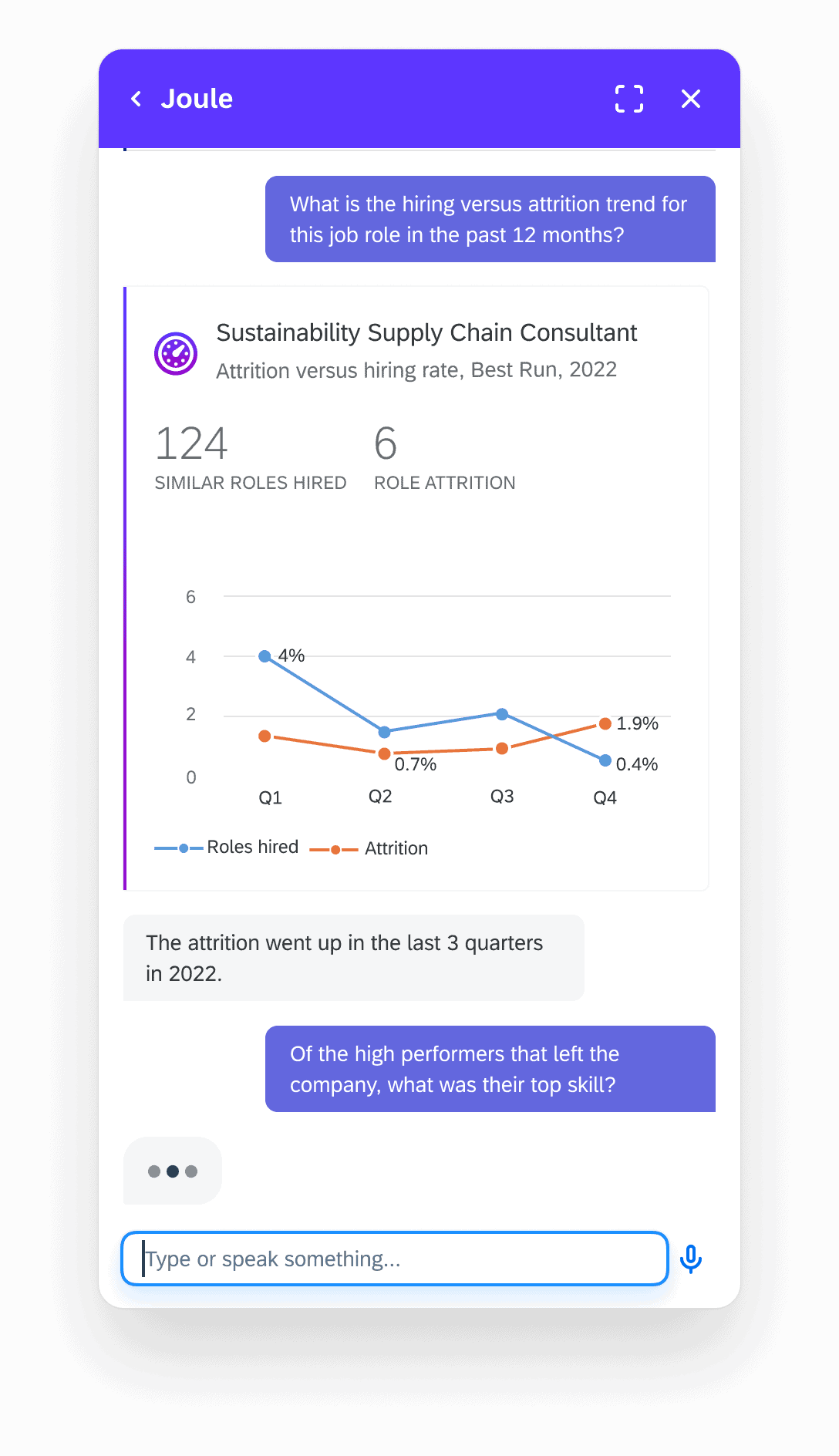 |
Joule can also help you with personal needs (expense management, travel, etc.) to offload business partner work and can help line managers with their recruiting. Look at how Joule helps with interviewing, employee selection, and even team budget management.
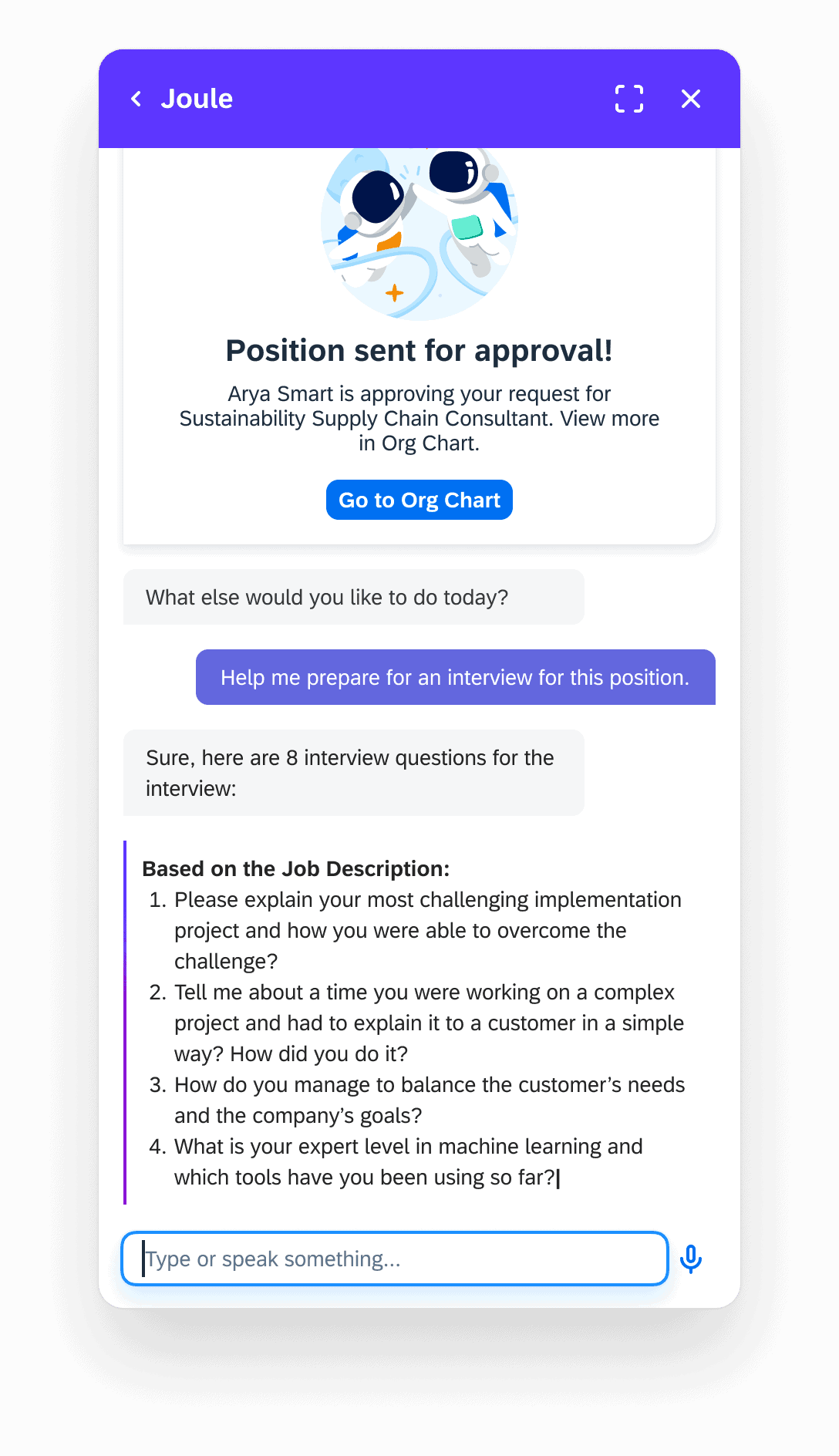 |
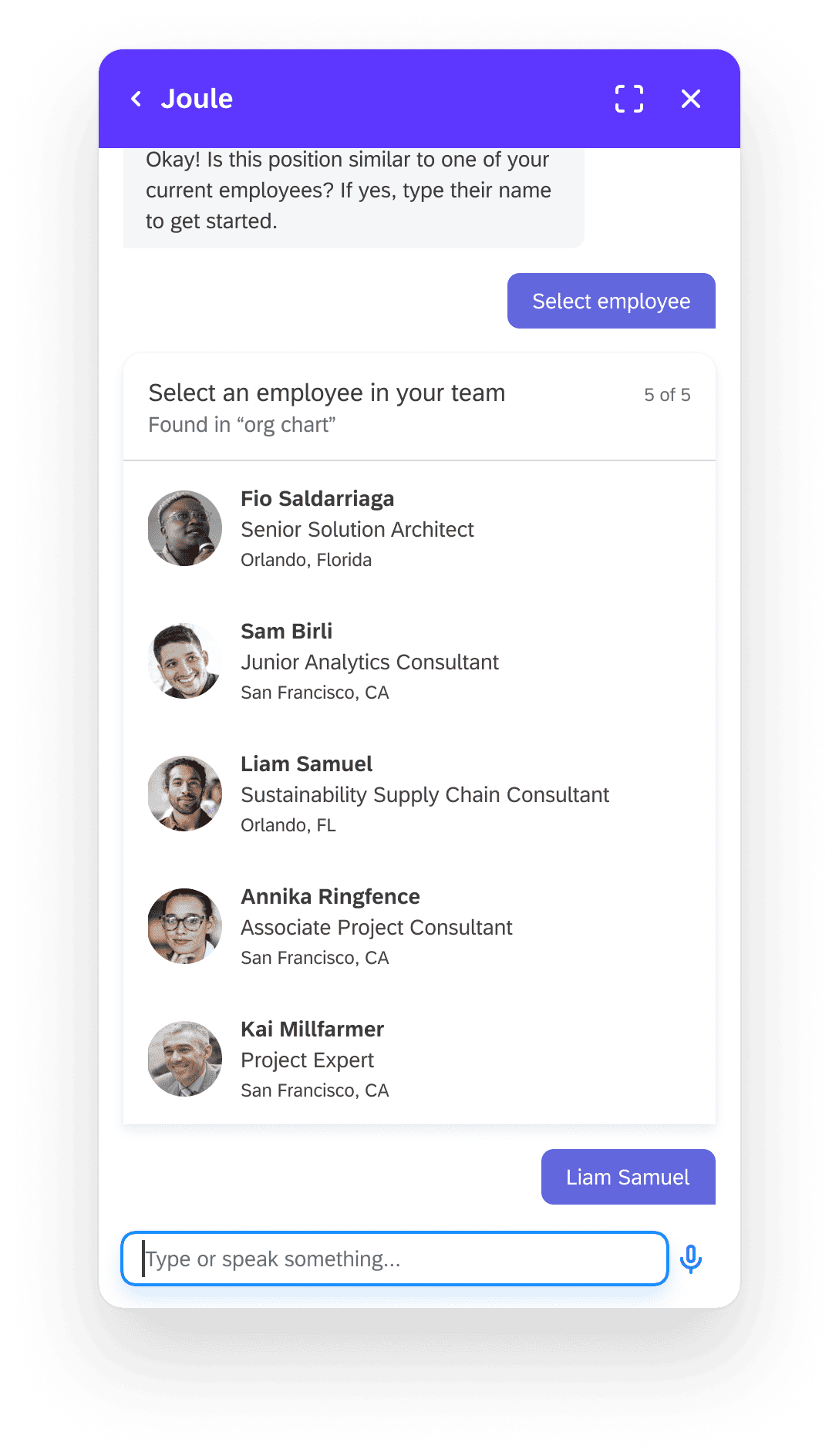 |
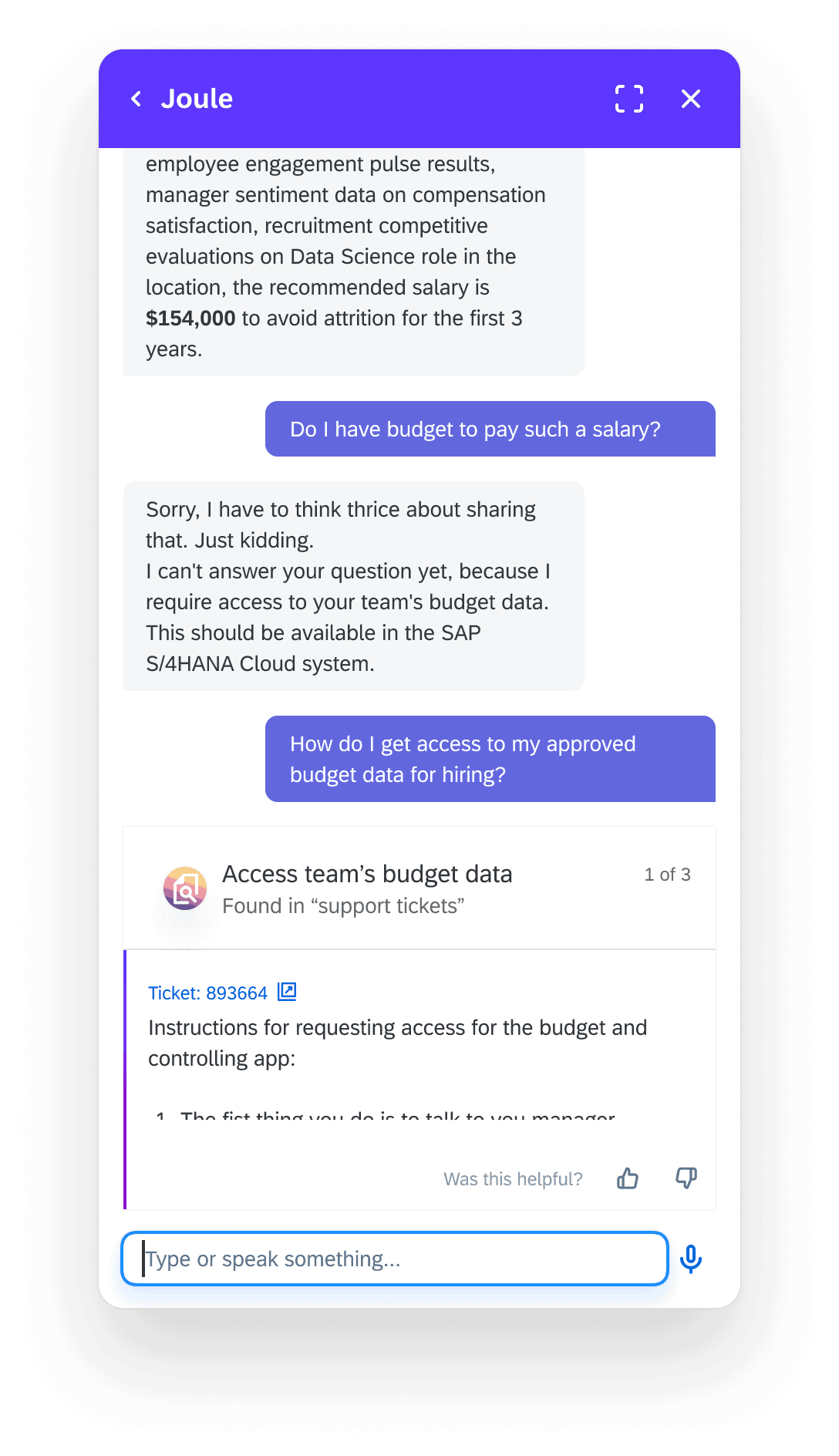 |
Bottom Line: SAP SuccessFactors HXM Is Now A Reality
After many years of development, integration, and design, SuccessFactors now offers one of the most integrated, AI-powered, HCM platforms in the market. And Joule, SAP’s AI Copilot, shows us where enterprise software is going in the future.
Additional Information
The Learning & Development SuperClass: A New Certificate Program from the JBA
Why Microsoft Viva Skills Could Disrupt The HR Tech Market
LinkedIn Launches Exciting Gen AI Features in Recruiter and Learning
Why It’s Time For A New Era In Human Resources. Enter Systemic HR.
Confused About Generative AI in HR? Here’s How To Run A Hackathon!
